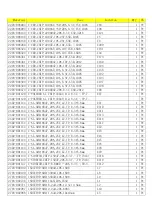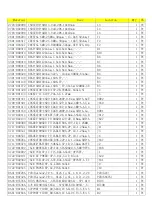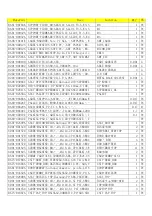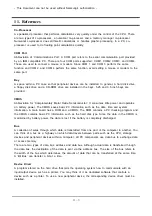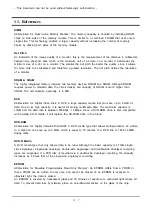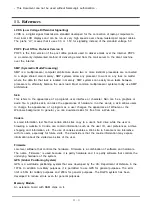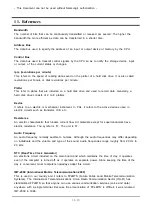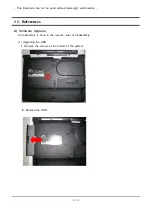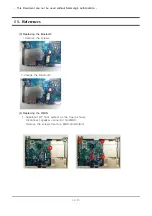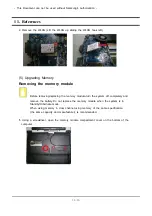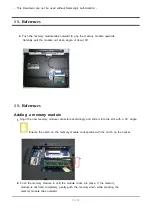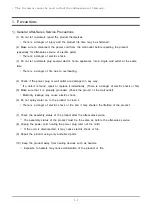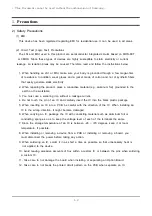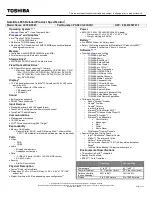
11-11
11.
References
ACPI (Advanced Configuration and Power Interface)
This is an open industry power management specification co-developed by Intel and Microsoft to
replace the APM (Advanced Power Management) specification. ACPI establishes industry-standard
interfaces for OS-directed configurations and power management on laptops, desktops and servers.
ACPI has been adopted by Windows 98 and Windows 2000. Since ACPI efficiently manages the
power consumption of the system and peripherals, it is especially useful for notebook computers.
Wafer
A round slice of silicon crystal used to create an IC. Micro-circuits such as transistors, resistors and
capacitors are constructed by diffusion (or other doping techniques, such as ion implantation) and the
deposition of various materials. The diameter of a wafer is approximately 5cm and the thinness is
0.25mm. In general, a few tens or hundreds of chips whose height and width are 5mm are
constructed on a wafer. An IC is created by slicing the chips on the wafer.
LED (Light Emitting Diode)
A diode that emits light when the current flows. It is used as an indicator in a PC or as a light
source in optical communications. It is generally made of potassium, arsenic and phosphorus.
Booting
This term derives from the phrase, ‘Wear boots and stand up’. This refers to the processes and
functions that a computer goes through when first starting up, ending with the proper loading of the
Operating System and preparing it for receiving commands.
Dual Core
This refers to a CPU that has dual processing cores within and has been developed by technology
that incorporates two or more Intel Pentium-based processing cores within a single processor.
TPM (Trusted Platform Module)
The Trusted Platform Module is a component on the desktop board that is specifically designed to
enhance platform security above-and-beyond the capabilities of today's software by providing a
protected space for encrypted keys, passwords and digital certificates so as to provide security
against attacks by external software and physical theft of the hardware.
- This Document can not be used without Samsung's authorization -
Summary of Contents for Hainan-C
Page 61: ...5 24 This Document can not be used without Samsung s authorization 5 Troubleshooting ...
Page 62: ...5 25 This Document can not be used without Samsung s authorization 5 Troubleshooting ...
Page 107: ...11 2 11 References This Document can not be used without Samsung s authorization ...
Page 123: ...11 18 11 References This Document can not be used without Samsung s authorization ...

